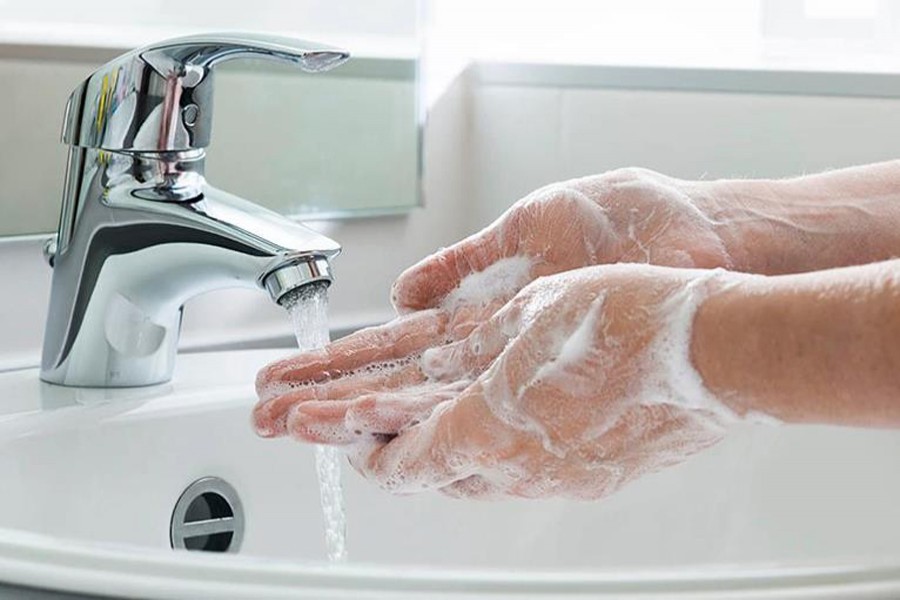At a time when the government of Bangladesh launched a drive against unlicensed healthcare facilities for four days from Monday to Thursday, a collaborative report released by the World Health Organisation (WHO) and the Unicef (United Nations Children's Fund) claims that only 38 per cent of the country's clinics and hospitals have basic hygiene. The rest 62 per cent do not provide for basic hygienic service. Compared to the world's average of half the total lacking the basic hygiene, here it is straightway 12 per cent higher or in other words the country has such facilities with basic hygienic provision 12 per cent less than the global average.
Titled, "Progress on WASH (Water, Sanitation and Hygiene) in healthcare facilities 2000-2021: Special focus on WASH and infection prevention and control", the report then gives a break-up of government-run and non-government health facilities. The non-government health establishments have a clear edge in this respect with 69 per cent boasting basic hygiene compared with only 32 per cent of the government facilities. Rural-urban divide in terms of access to safe water in healthcare centres is striking with 90 per cent of the urban facilities providing for safe water and only 10 per cent of rural areas doing the same.
Another highly crucial service that counts for maintenance of hygiene and environment is medical waste management. Only 34 per cent of medical facilities have basic waste management system, 52 per cent of them on a limited scale and the rest 14 per cent have none at all. What is particularly alarming is that worldwide 3.85 billion are at risk by receiving service at the facilities with limited to modest basic hygiene including water, soap or alcohol-based hand rub. The 688 million who receive service at the health facilities with no basic hygiene evidently run a far greater risk.
Understandably, the alcohol-based hand sanitizer is just a late addition forced by coronavirus infection. Let alone this element, the hygiene issue plays a crucial role particularly in the status of health of the newborn and their mothers. This aspect and the approval of healthcare facilities including diagnostic centres by the Directorate General of Health Services (DGHS) together make an interesting case for health service in Bangladesh.
The crackdown by the health directorate this time is on the health facilities that have failed to avail of the opportunities extended for about three months after the initial drive in May-June last to obtain fresh licences or time-expired licences renewed. Now the question that begs an answer is, if the issuance of licences or renewal is done on the basis of on-site inspection of the facilities and hygienic condition. In a country where quacks or impersonating physicians are often caught in the act of running hospitals, clinics and diagnostic centres or even carry out complex medical operations, issuance or renewal of licences is not enough.
Apart from quacks, physicians unqualified or without specialisation also have reportedly offered wrong treatment or performed unskilled operations causing injuries or even death to both newborns and mothers at the time of delivery. Even if qualified doctors are in charge of delivery of babies, the situation can turn grave simply because of unhygienic condition of the facilities concerned. The fact that around 670,000 newborns die of sepsis the world over every year speaks volumes for the unhygienic services in clinics and hospitals. Bangladesh is no exception to this undesirable situation prevailing in facilities with maternity service.
In many areas the country's physicians boast enviable records with many of them having to their credit proven performance abroad. But their good works are often nullified by the post-operative care where this country lags behind its big neighbour, let alone advanced countries, by many miles. This lacking in the development of the nursing system together with the shoddy hygienic environment often undermines the healthcare system in Bangladesh. Higher training for nurses and radical improvement in hygiene can make a huge difference in the system. This calls for far greater investment in these two areas of the healthcare system.
The DGHS has done a commendable job in procuring vaccines and inoculating the population. This could be done partly because of the money made available in time and partly because the country had long developed an Expanded Programme of Immunization (EPI). The basic infrastructure was there and it helped bring the population under the anti-coronavirus vaccination programme. Yet this achievement may be at risk if the basic hygiene in healthcare facilities is not developed on a priority basis.
Let it not be forgotten that investment in education and healthcare pays in spade. Mega projects have received greater priority than these two vital areas of human resources. The return on investment in these two areas is immeasurable. Such investment does not only avoid unnecessary or extra costs needed to meet emergencies that arise later on for initial negligence but also increase the capabilities of human resources. For example, investment leading to improved post-operative care and hygiene can improve healthcare system at home and stop patients' exodus to foreign countries for medical purposes. Licence issuance or renewal should be made conditional upon improved hygiene in healthcare facilities.


